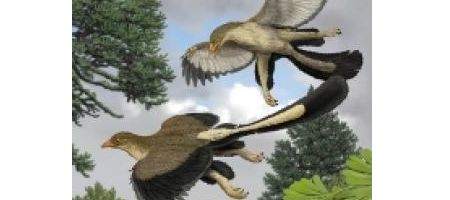The first wings on feathered dinosaurs were pretty useless, new research shows, meaning they’d have found it hard to take off and fly at low speeds.

Academics at Bristol, Yale and Calgary universities have shown that prehistoric birds had a much more primitive version of the wings we see today, with rigid layers of feathers acting as simple airfoils for gliding.
These feathers were probably initially developed for insulation, before their shape evolved for display and camouflage. Only later, as evolution changed the configuration of the feathers, did their role in the aerodynamics and mechanics of flight became more important.
“By studying fossils carefully, we are now able to start piecing together how the wing evolved. Before, it seemed that we had more or less modern wings from the Jurassic onwards,” says
Dr Nicholas Longrich of Yale University.
“Now it’s clear that early birds were more primitive and represented transitional forms linking birds to dinosaurs. We can see the wing slowly becoming more advanced as we move from Anchiornis, to Archaeopteryx, to later birds.”
Natural selection over millions of years ultimately modified dinosaurs’ forelimbs into highly-efficient, feathered wings that could rapidly change their span, shape and area, allowing dinosaurs to finally conquer the skies.
This basic wing configuration has remained more or less the same for the past 130 million years. Birds have a layer of long, asymmetrical flight feathers with short covert feathers on top, and can separate and rotate these flight feathers to gain height, change direction and hover.
The team looked at the dinosaur Anchiornis huxleyi and the Jurassic bird Archaeopteryx lithographica – 155 million years old and widely considered to be the earliest known bird.
Their wings differed from modern-day birds in being composed of multiple layers of long feathers. Although individual feathers were relatively weak due to slender feather shafts, their layering is likely to have produced a strong airfoil.
But the inability to separate feathers suggests that taking off and flying at low speeds may have been very difficult, meaning that wings were primarily used in high-speed gliding or flapping flight.
“We are starting to get an intricate picture of how feathers and birds evolved from within the dinosaurs,” says Dr Jakob Vinther from the University of Bristol.
“This new research is shedding light not just on how birds came to fly, but more specifically on how feathers came to be the way they are today – one of the most amazing and highly specialised structures in nature.”






